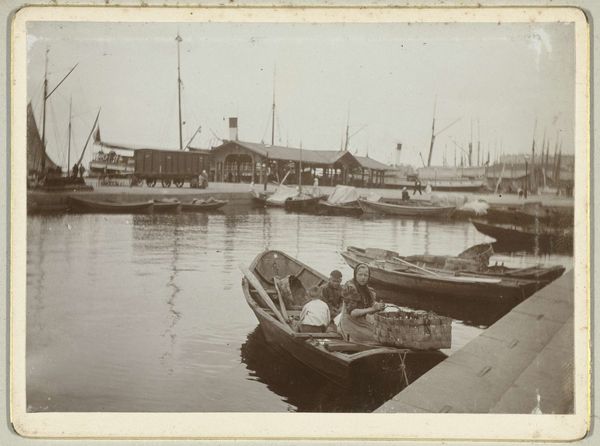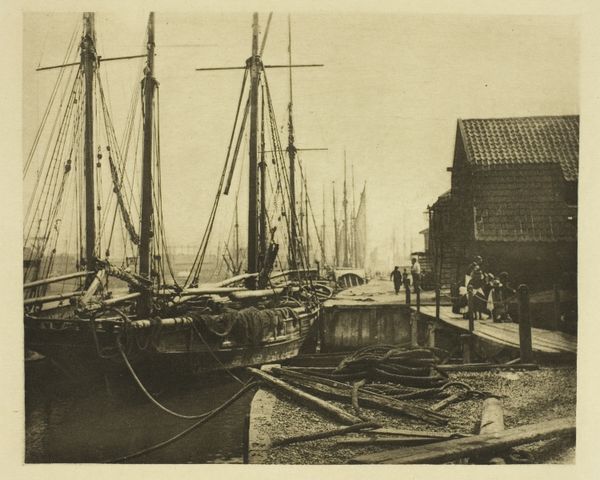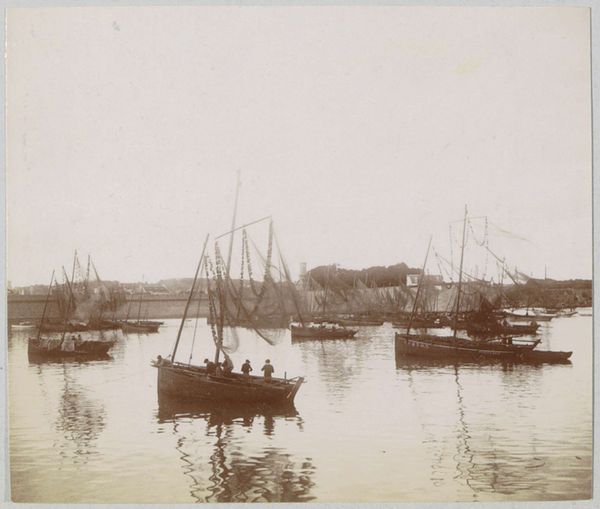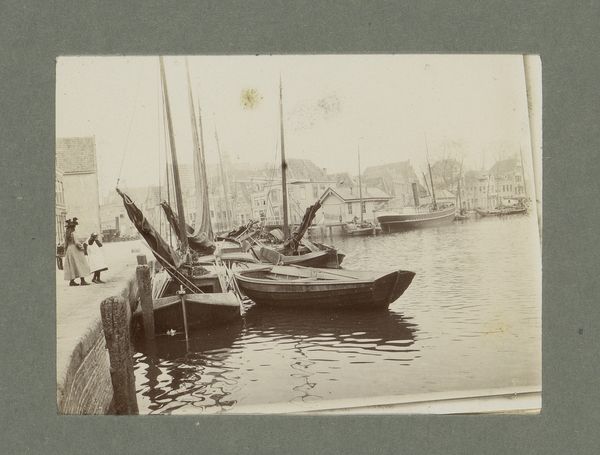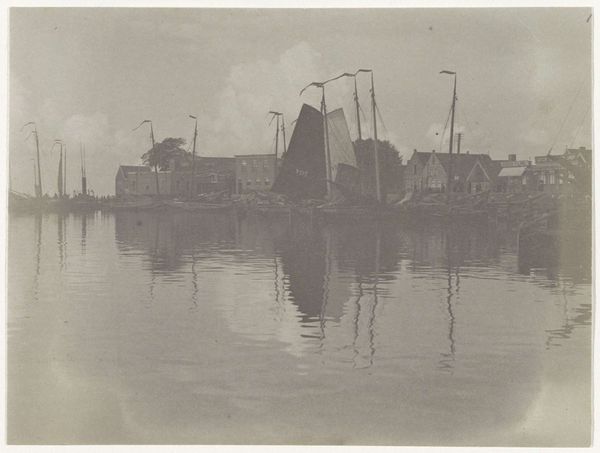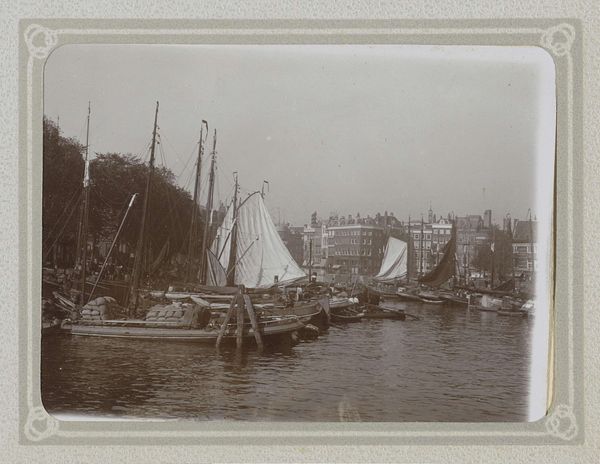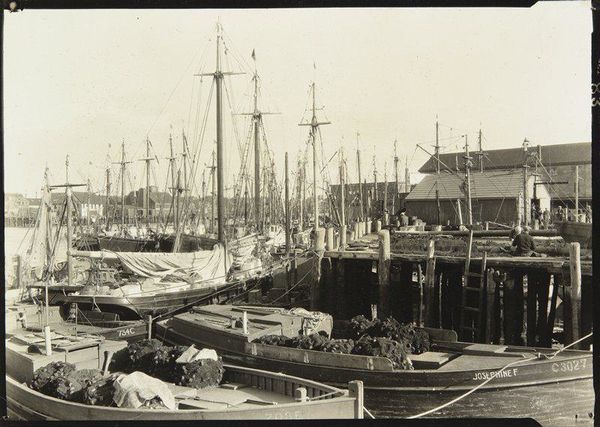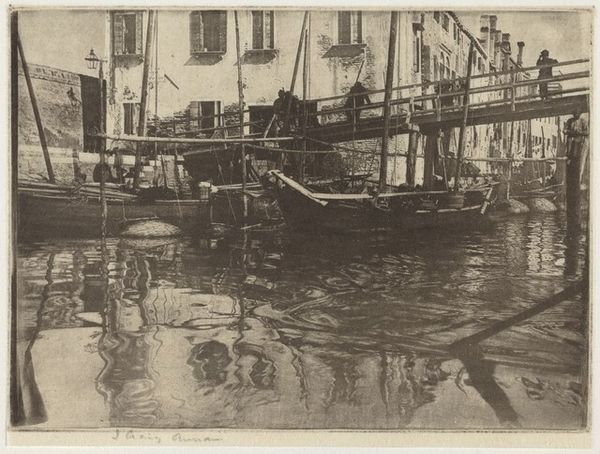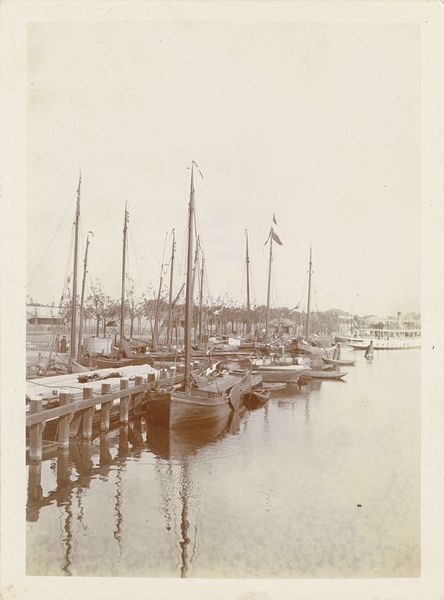
print, photography
#
still-life
#
16_19th-century
#
pictorialism
# print
#
landscape
#
photography
#
england
Dimensions: 10 × 12.4 cm (image); 25.1 × 30 cm (paper)
Copyright: Public Domain
Curator: Peter Henry Emerson's "The Ferry," created in 1887, offers a compelling glimpse into late 19th-century England, presented as a beautiful photographic print. What’s your first reaction to it? Editor: Somber. It's almost entirely gray, with very few points of strong contrast. It’s as if the mist itself has been captured on the paper. Curator: That muted tonality is partly intentional. Emerson was a key figure in the Pictorialist movement. Pictorialism prized photography as fine art, prioritizing aesthetic effect over pure documentation. Emerson manipulated the print to soften the focus, obscuring sharp details to create that specific atmospheric effect. Editor: I see how the soft focus lends a sense of timelessness. But, in reality, maritime labor like ferrying goods and people was very demanding work at the time, deeply ingrained in class structure. The soft light romanticizes daily struggle. What can you tell me about the context of its production? Curator: Well, Emerson, who was trained as a surgeon, brought a scientific understanding of optics to photography, but he also saw it as a distinct art form. His approach was driven by careful use of the materials at hand, the lenses, the printing process, even the paper itself. He argued fiercely for photography's recognition alongside painting and sculpture. Editor: Yes, and in Pictorialism generally, this appeal to art status often served to distance the medium from its potential as a tool for social commentary, like what we see in the photojournalism that was emerging around the same time. The focus became about manipulating the materials to achieve the most aesthetic images, further alienating everyday labor. Curator: However, I’d add that the print does show an awareness of class difference. In many ways, it's a document of the labor required to keep commerce running smoothly at the time. It depicts workers involved with operating the infrastructure, no less relevant for having artistic ambitions. Editor: True, that ferryman, though small, is the center of the action, and the massive scale of the ships indicates global connections through trade, making us ask about the system sustaining the image itself. Overall, viewing the work through the lens of that socio-economic context illuminates its historical complexities. Curator: Seeing it from a vantage point that also emphasizes material process helps us value the artist’s skills to extract an atmosphere from something that could've just as easily felt cold or empty, which feels valuable when considered together.
Comments
No comments
Be the first to comment and join the conversation on the ultimate creative platform.

